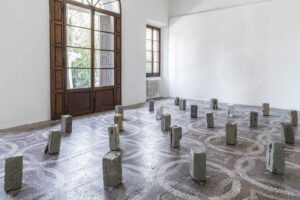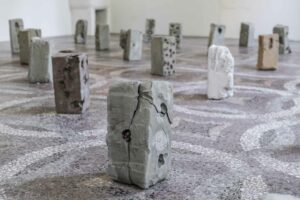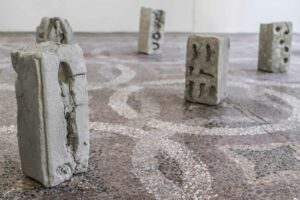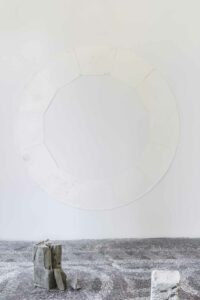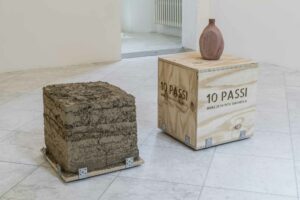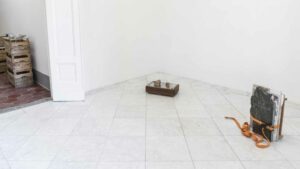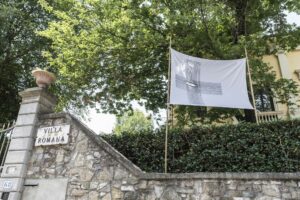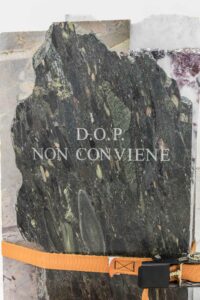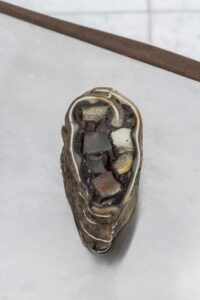Andrea d’Amore was born in Livorno and currently lives nomadic. He graduated in Literature and Philosophy at the University of Florence. Parallel to his studies, he began experimenting with different ways of cooking and making art. By means of fusing experiences of dialogue, sharing, hospitality, cooking and conviviality his practice today aims to create atmospheres.
Ten Steps from Genetic Erosion
Sculptures, installation, exhibition
2017
Never before has our planet been shaped by man to such an extent as in the last 50 – 60 years, the new epoch in earth’s history called the Anthropocene. Never had humans had a greater influence on the biological, geological and atmospheric processes. Man himself became a geological factor, while the overexploitation of biodiversity threatened his own existence. Among the more than 14,000 vertebrate populations recorded, genetic stocks have declined by almost 60 percent over the past 40 years, according to the WWF in 2016.
The artist warns: “To save humankind from extinction means agricultural biodiversity. Condemning production monopolies and exchanging seeds are acts of resistance and survival.” His sculptural works are formed by processes of exchange between humans and non-humans that feed on each other. Their basis is the earth. D’Amore placed wet clay blocks in the hills of Casentino, from which wild animals dug and bit their food. In Molise he took care of the endangered Turchesca potato and collaborated with brewer Biagio Sannino to create a beer from it, which is stored in earth cubes. He created a salami that symbolically refers to the ritual dimension of eating. In Abruzzo he followed the smell of brigandism. “Being with yourself, walking around to find clay in the country. Dig, find, sift, dry, expose to the sun, mix with water, drink and brush. Digest. Repeat the cycle on animal carcasses. Sacrifice one’s own hunt, one’s own work, one’s own wealth, to give back a soul, to return to the natural cycle of capture and prey in tense and symbiotic equilibria, to take care.”
On the occasion of the exhibition, a silkscreen print edition with critical texts on biodiversity will be published, which will dissolve into compost after reading. It is printed with an ink made from acacia and crepe extract on Sri Lankan paper made from 80 percent elephant dung and 20 percent rice.
Hope
Installation, video by ciboideale and Martino Chiti
2015
Hope is a permanent installation visible at night. A path marked with phosphorescent paint on the “Path of Hope” or “Pass of Death”, a road historically taken to avoid the border controls between Italy and France. The path ends at a wall of barbed wire at the border between the two nations. Hope was installed in the summer of 2015, in the days when hundreds of migrants settled on the rocky beach of Ventimiglia to protest against the block in the flow of migrants at the French border of Menton. A video documents the installation and the world built by the migrants settled on the rocks, the place where the protesters and Andrea d’Amore met to discuss the installation in progress on the path.
Hope is the result of a collaboration by Andrea d’Amore and Martino Chiti. Martino Chiti, born in Livorno in 1976, is a photographer, director and video designer. He studied film at the University of Florence and moved to Madrid where he attended a three-year master’s degree in photography. He creates documentaries and reportages collaborating with institutions and associations involved in health and educational projects. He founded Proforma Videodesign, a multimedia agency creating installations and virtual scenographies for events, theater, museum and brands. He further has been founding the Miranda Project working on installations of photographic blow-ups in urban contexts, both for marketing campaigns and as an artistic instrument of free expression. He constantly studies the relationship between society and the individual, in continuous search for new experimentation.
